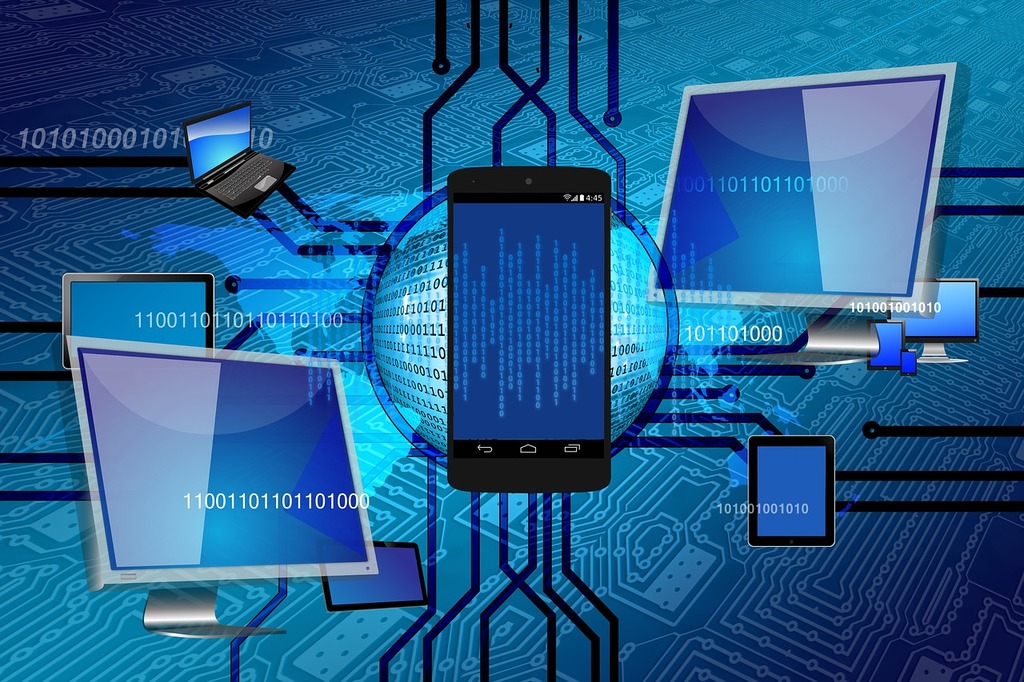The Dawn of Networking
Network technology has been the backbone of our modern digital age, enabling seamless communication and data transfer across the globe. Its evolution has been nothing short of revolutionary, transforming from rudimentary connections to sophisticated, high-speed networks. This article delves into the journey of network technology, highlighting its past achievements, current state, and the promising future.
he Past – Humble Beginnings
The Birth of ARPANET
In the late 1960s, the Advanced Research Projects Agency Network (ARPANET) was born, laying the foundation for modern networking. Funded by the U.S. Department of Defense, ARPANET’s primary goal was to create a communication system that could withstand any form of attack. Its packet switching technology, which broke down messages into smaller packets, sent them separately, and reassembled them at their destination, was groundbreaking. This innovation set the stage for the development of the internet.
Ethernet and Local Area Networks
By the 1980s, Dr. Robert Metcalfe proposed the Ethernet technology, which became the standard for connecting computers over short distances. Ethernet allowed for the creation of Local Area Networks (LANs), enabling multiple devices within a limited area, like an office, to connect and share resources. This marked a significant step in networking evolution, with coaxial cables being replaced by twisted pair and fiber optic cables, offering faster data transfer rates.
The Present – The Age of Internet and Wireless Communication
The Rise of the Internet
The 1990s witnessed the rapid expansion of the internet. With the introduction of the World Wide Web by Sir Tim Berners-Lee and the launch of popular browsers like Netscape Navigator, information became easily accessible. The digital age truly took off, with businesses, governments, and individuals realizing the potential of a connected world. The proliferation of websites, online services, and e-commerce platforms reshaped industries.
Wireless Networking – WiFi and Beyond
The 21st century heralded the age of wireless communication. WiFi technology, based on the IEEE 802.11 standard, allowed devices to connect to the internet without physical cables. This led to the proliferation of mobile devices, smart homes, and the Internet of Things (IoT), with everyday objects becoming interconnected. The advent of 4G further accelerated mobile internet usage, enabling video streaming, online gaming, and much more.
The Future – Towards a Hyperconnected World
5G and the Next Generation of Speed
5G technology is set to redefine networking. With potential speeds up to 100 times faster than 4G and reduced latency, 5G will pave the way for real-time applications. This includes autonomous vehicles that require instant data transfer, augmented reality experiences with zero lag, and smart cities with millions of interconnected devices. Countries like South Korea and China are already leading in 5G deployment, with global adoption on the horizon.
Quantum Networking – The Frontier of Secure Communication
Quantum networking, still in its nascent stages, promises a revolution in secure communication. Leveraging the principles of quantum mechanics, particularly quantum entanglement, this technology could allow for instantaneous and ultra-secure data transfer. While challenges remain in scaling and maintaining quantum states, breakthroughs in this field could render traditional encryption methods obsolete.

Visuals and Case Studies
From Dial-Up to Broadband – A Visual Timeline
A graphical representation vividly captures the progression from the early days of dial-up connections, with speeds of just 56 Kbps, to today’s high-speed broadband networks offering Gigabit speeds. This timeline showcases key milestones, such as the launch of the first commercial ISPs, the dot-com boom, and the rise of streaming services, highlighting the exponential growth and innovations in network technology.
Case Study: Smart Cities and Advanced Networking
Modern cities like Singapore and Barcelona are integrating advanced network technologies to enhance urban living. These smart cities use interconnected sensors and devices to manage traffic, conserve energy, and improve public services. For instance, real-time data from traffic cameras can be used to optimize traffic light timings, reducing congestion and emissions.
Tools/Resources
Network Monitoring and Management Tools
As networks become more intricate, tools for monitoring and management have evolved. Software solutions like SolarWinds offer comprehensive network monitoring, while Wireshark provides deep packet inspection. Cisco’s suite of tools, including Cisco DNA Center, offers centralized management for large-scale networks, ensuring optimal performance and security.
Resources for Staying Updated
The field of network technology is ever-evolving. Websites like Network World and IEEE Xplore offer the latest news and research. Journals from the Internet Engineering Task Force (IETF) and conferences like Cisco Live provide deep dives into emerging technologies, ensuring professionals stay at the forefront of network advancements.
Cloud Computing and Distributed Networks
Cloud Computing Revolution
Cloud computing has fundamentally transformed the landscape of data storage, processing, and access. Instead of relying on local servers or personal devices, users can now access applications and data stored in remote servers, often in real-time. Leading providers like Amazon Web Services (AWS), Microsoft Azure, and Google Cloud Platform (GCP) have been at the forefront, offering scalable solutions that cater to businesses of all sizes.
Distributed Networks and Decentralized Systems
Distributed networks, where multiple computers collaborate to function as a unified system, have gained prominence in recent years. These networks share resources and processing tasks, ensuring efficiency and redundancy. A notable example of this is blockchain networks, such as Bitcoin and Ethereum. These decentralized systems leverage distributed ledger technology to manage and secure transactions without the need for a central governing entity.
Internet of Things (IoT) and Network Security
Rise of the Internet of Things (IoT)
The Internet of Things, or IoT, signifies the growing network of devices that communicate and share data with each other. This encompasses everything from smart home appliances to industrial sensors. Devices like the Nest smart thermostat or wearable fitness trackers are prime examples of how IoT is integrating into our daily lives, offering convenience and efficiency.
Network Security in the Digital Age
As our reliance on interconnected devices and data exchange grows, so does the importance of network security. Protecting against cyber threats, unauthorized access, and data breaches has become paramount. Technologies and strategies, including firewall systems, encryption methods, multi-factor authentication (MFA), and intrusion detection systems (IDS), are continuously being developed and refined to safeguard our digital ecosystems.
Edge Computing and Latency Reduction
Edge Computing and Its Significance
Edge computing is a paradigm shift that emphasizes processing data closer to its source. This approach reduces latency and ensures improved performance for real-time applications. Content Delivery Networks (CDNs) such as Cloudflare and Akamai exemplify this by using edge computing to cache content closer to users, ensuring faster and more reliable access to websites and online services.
Latency Reduction for Enhanced User Experience
Reducing latency, the delay in data transmission and reception, is vital for many modern applications. Those requiring immediate responses, such as online gaming or real-time analytics, benefit immensely from low-latency networks. Companies in these sectors invest heavily in technologies and infrastructure to minimize delays and provide seamless user experiences.
Artificial Intelligence and Network Automation
AI’s Role in Network Optimization
Artificial Intelligence (AI) is playing an increasingly pivotal role in network management. By analyzing data patterns, AI can predict potential network failures, optimize traffic routing, and enhance overall network efficiency. AI-powered tools and platforms are becoming standard for many network administrators, ensuring proactive and optimized network management.
Network Automation and Orchestration
The complexities of modern networks demand automation to streamline management and reduce the need for human intervention. Software-defined networking (SDN) and network orchestration tools, such as Ansible, are leading the charge in this domain. These technologies automate routine tasks, configurations, and adjustments, ensuring networks remain agile and responsive to changing demands.
Future Prospects and Emerging Technologies
The Promise of Mesh Networks
Mesh networks represent a new frontier in networking. These networks consist of interconnected nodes that communicate directly with each other, creating resilient and adaptable systems. They hold particular promise for applications like smart cities, emergency response systems, and areas with limited traditional infrastructure.
Emerging Technologies: Quantum Internet and Beyond
The realm of quantum internet is one of the most exciting prospects in network technology. By harnessing the principles of quantum mechanics, particularly quantum entanglement, we are on the cusp of achieving ultra-secure and high-speed communication. Research into quantum key distribution (QKD) and quantum teleportation is paving the way for innovations that could redefine the very fabric of networking and communication.
5G and Next-Generation Connectivity
5G Revolutionizing Connectivity
5G technology represents the next leap in mobile connectivity, promising significantly faster speeds, lower latency, and higher capacity. The potential applications of 5G extend beyond just faster smartphones to revolutionary technologies like self-driving cars, remote robotic surgeries, and virtual and augmented reality experiences. Telecom giants like Verizon, AT&T, and T-Mobile have already begun deploying 5G networks, ushering in a new era of connectivity and innovation.

Network Virtualization and Software-Defined Infrastructure
Network Virtualization Transforming Architecture
Network virtualization is redefining the traditional network architecture by separating the network’s physical infrastructure from the services they provide. This approach enables greater flexibility, scalability, and cost-effectiveness. For example, virtual private networks (VPNs) operate on shared physical hardware but are logically separated, providing secure and private communication over public networks.
Software-Defined Infrastructure and its Impact
Software-defined infrastructure, such as software-defined networking (SDN) and software-defined data centers (SDDC), abstracts and separates the control plane from the data plane, enabling more agile and adaptable networks. Companies like VMware and Cisco offer solutions that provide centralized control, making network management more efficient and responsive to changing demands.
Conclusion
The realm of network technology has witnessed a transformative journey, evolving from its nascent stages of simple connectivity to the sophisticated, high-speed, and secure networks of today. As we’ve explored, innovations such as 5G, network virtualization, edge computing, and quantum networking are not just technological advancements; they are reshaping industries, economies, and our daily lives.
The future promises even more groundbreaking developments, with the potential to further revolutionize how we communicate, work, and live. Staying abreast of these changes is not just beneficial—it’s imperative for businesses, professionals, and individuals alike who wish to thrive in this digital age. As we look ahead, the horizon of network technology is vast and full of opportunities, beckoning us to explore, adapt, and innovate.
FAQ’s
What is the primary difference between 4G and 5G technology?
5G technology offers significantly faster data download and upload speeds compared to 4G. Additionally, 5G provides reduced latency, enhanced capacity, and the ability to connect more devices simultaneously. This makes it ideal for emerging applications like IoT, augmented reality, and autonomous vehicles.
How does network virtualization improve network efficiency?
Network virtualization allows for the creation of multiple virtual networks on a single physical infrastructure. This separation enables better resource utilization, easier management, and rapid deployment of new services without the need for significant changes to the underlying hardware.
Why is edge computing becoming more important in the era of IoT?
Edge computing processes data closer to the source of generation (like IoT devices) rather than sending it to a centralized data center. This reduces latency, conserves bandwidth, and allows for real-time data processing, which is crucial for many IoT applications.
How does quantum networking enhance communication security?
Quantum networking leverages the principles of quantum mechanics, particularly quantum entanglement. This allows for the creation of communication channels that are theoretically unhackable. Any attempt to eavesdrop or intercept the communication would disrupt the quantum state, alerting the parties involved.
What are the benefits of software-defined infrastructure in modern networks?
Software-defined infrastructure provides a higher degree of flexibility and automation in network management. By abstracting the control layer from the physical hardware, networks can be reconfigured, scaled, and optimized on-the-fly through software interfaces. This results in more agile, efficient, and cost-effective network operations.



